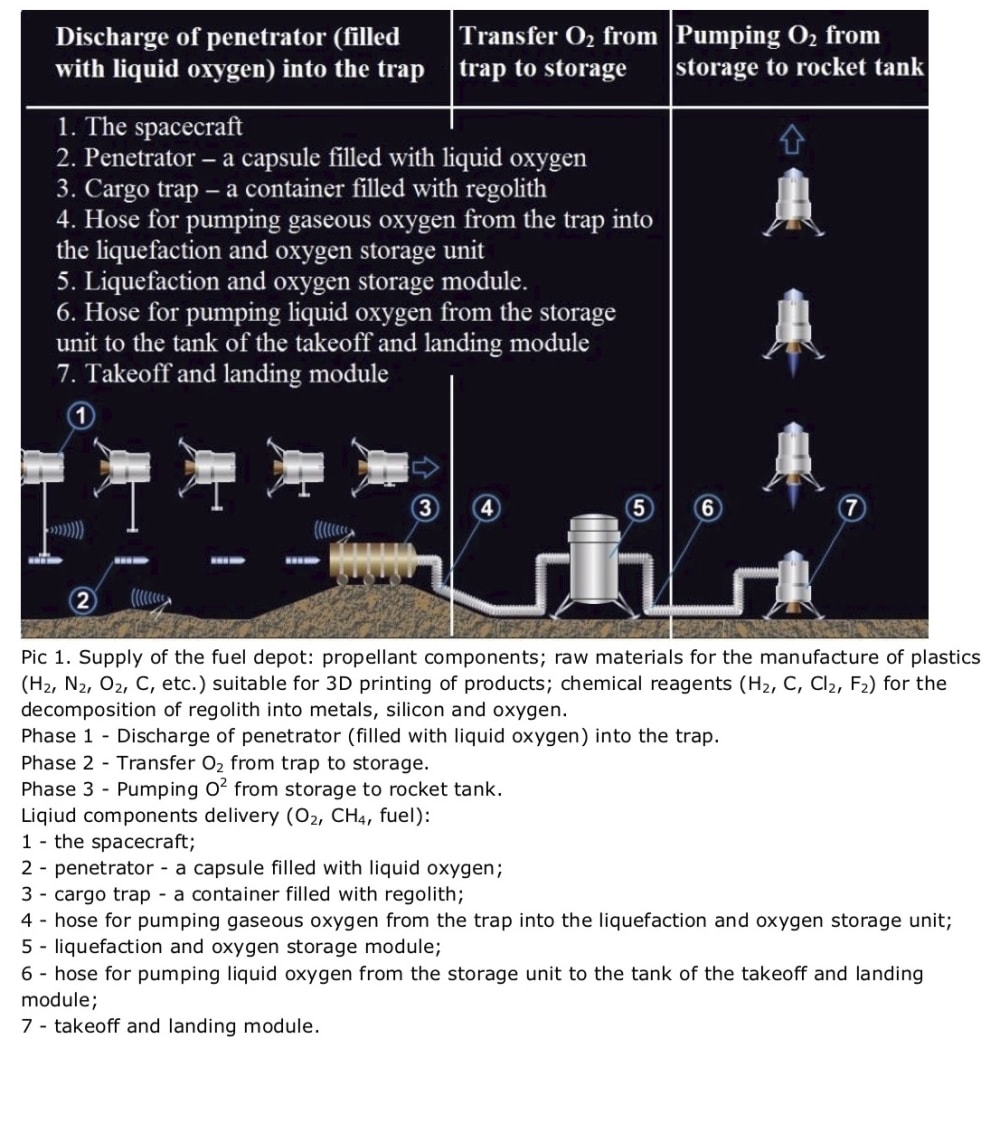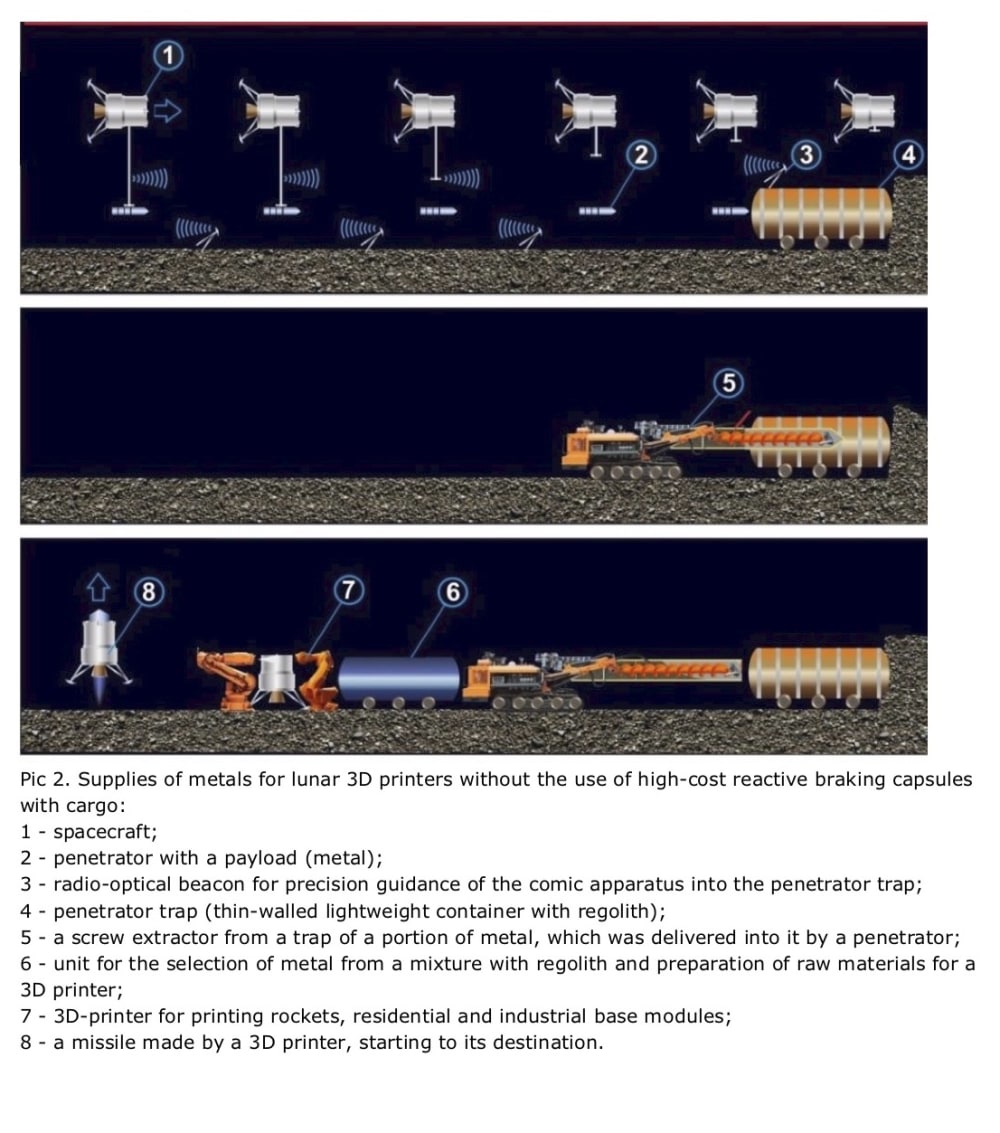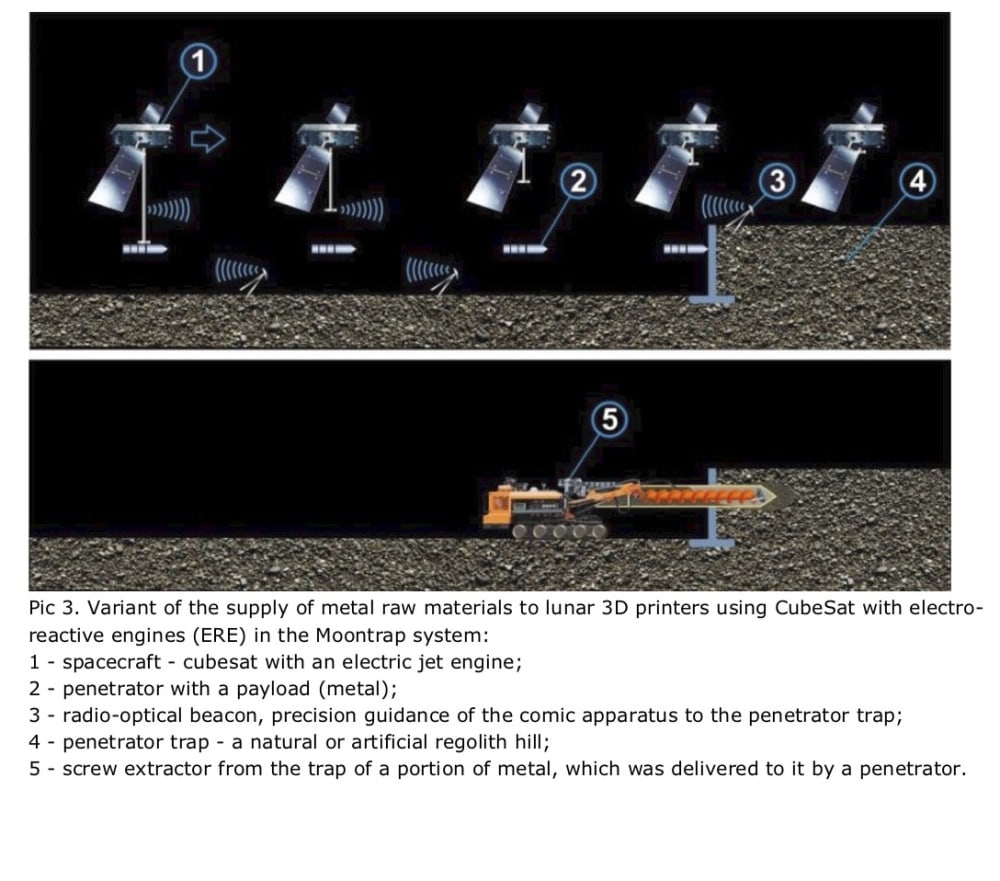MoonTrap system saves up to 95% on transportation costs when delivering raw materials to space for 3D printers, as well as rocket fuel. Currently, the delivery of raw materials for 3D space printers costs as much as the delivery of finished products. There are benefits to printing spacecraft parts in space, but for many customers they do not greatly outweigh the convenience of using devices made on Earth. But a multiple reduction in the cost of products printed in space, compared with products delivered to space, is a strong economic incentive for consumers of 3D printing products.
Benefits Users
Sales of spacecraft reach $ 17 billion / year - accordingly, most of this market will go to investors in the MoonTrap project due to lower prices for their production in space. An additional advantage is that, together with the supply of raw materials for 3D space printers, rocket fuel components are simultaneously delivered to near-Earth space. Demand for rocket fuel for refueling orbital tugboats and spacecraft is currently estimated at $ 6.5 billion per year.
Justification
The bulk of R&D is ground testing of a compact transport system. In general, these tests - shots penetrators trapped with analogue regolite and development of metal extraction procedure and gases.
The process on which the operation of the space delivery system of raw materials for 3D printers is based has passed pilot studies in the middle of the last century and is still used in practice in the military. The use of this process for delivering portions of raw materials to satellites and the Moon does not require the development of a fundamentally new technique, but it is an integration of well-known technical solutions. These projects are an example of a design approach known as “off the shelf”.
The MoonTrap system is a trap for high-speed penetrators - capsules with a load in the form of very elongated cylinders. A trap is placed on the surface of the moon. It is a lightweight thin-walled cylindrical container filled with a brake medium with a large mass. Penetrators are dropped from spacecraft passing over the lunar surface and then returning to Earth orbit. CubeSat analogues may be used. The moon trap is similar to laboratory traps that are used to capture penetrators entering it at a speed of about 2500 m / s. Metal penetrators, when braking in a trap, scatter into a dusty substance, which is easy to remove from the trap and then get raw materials from it for 3D printing.
Due to the fact that with this method of delivering raw materials to the moon, the need for reactive braking of capsules with cargo having a speed of 2500 m / s is eliminated, a gain is obtained by eliminating the mass of rocket fuel and the mass of the rocket stage. The cost of manufacturing a rocket stage is also excluded. Thus, the delivery of raw materials by penetrators into the trap is 3-7 times more efficient than delivery.
Video
Like this entry?
-
About the Entrant
- Name:Alex Mayboroda
- Type of entry:individual
- Software used for this entry:Blender
- Patent status:pending








